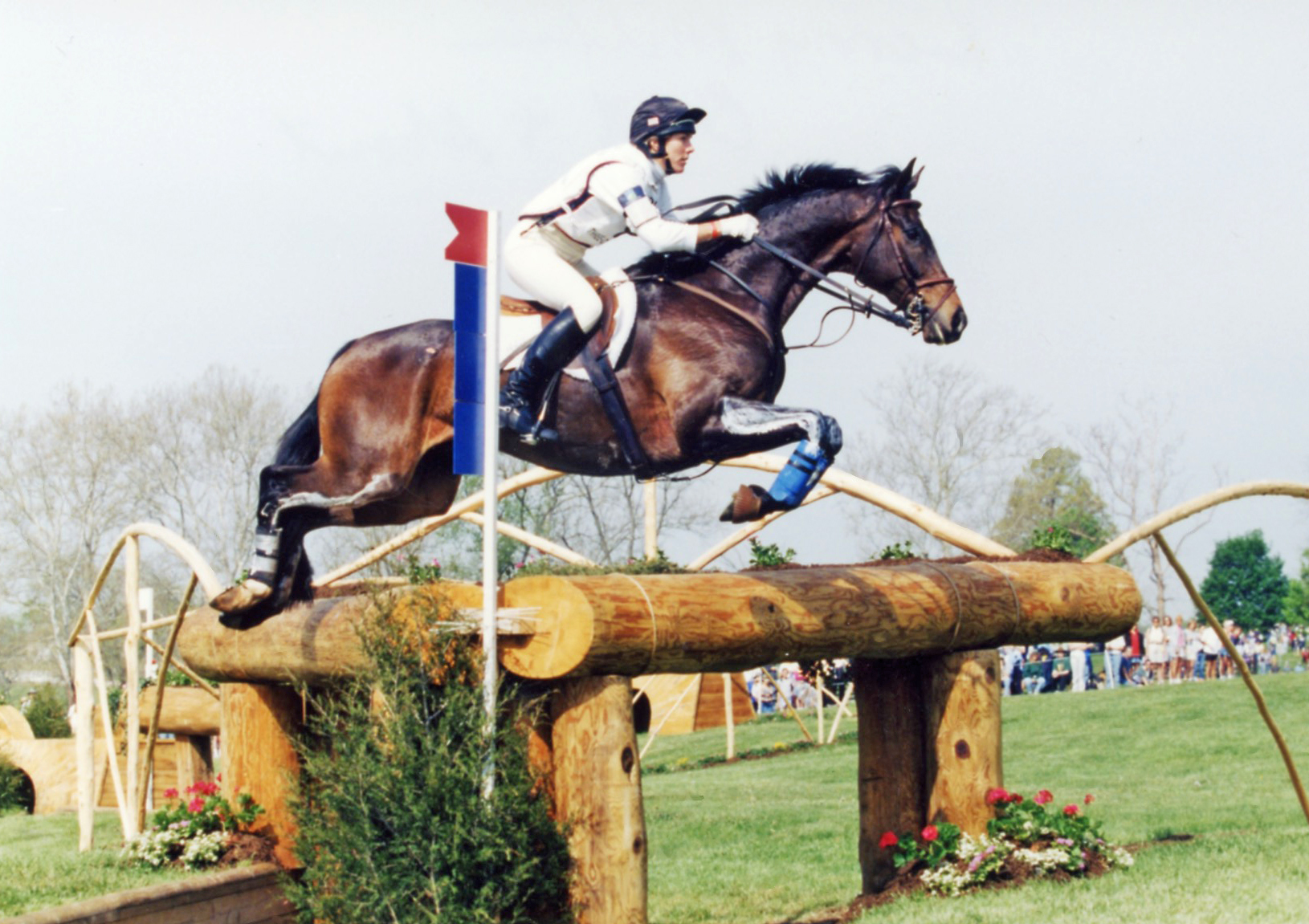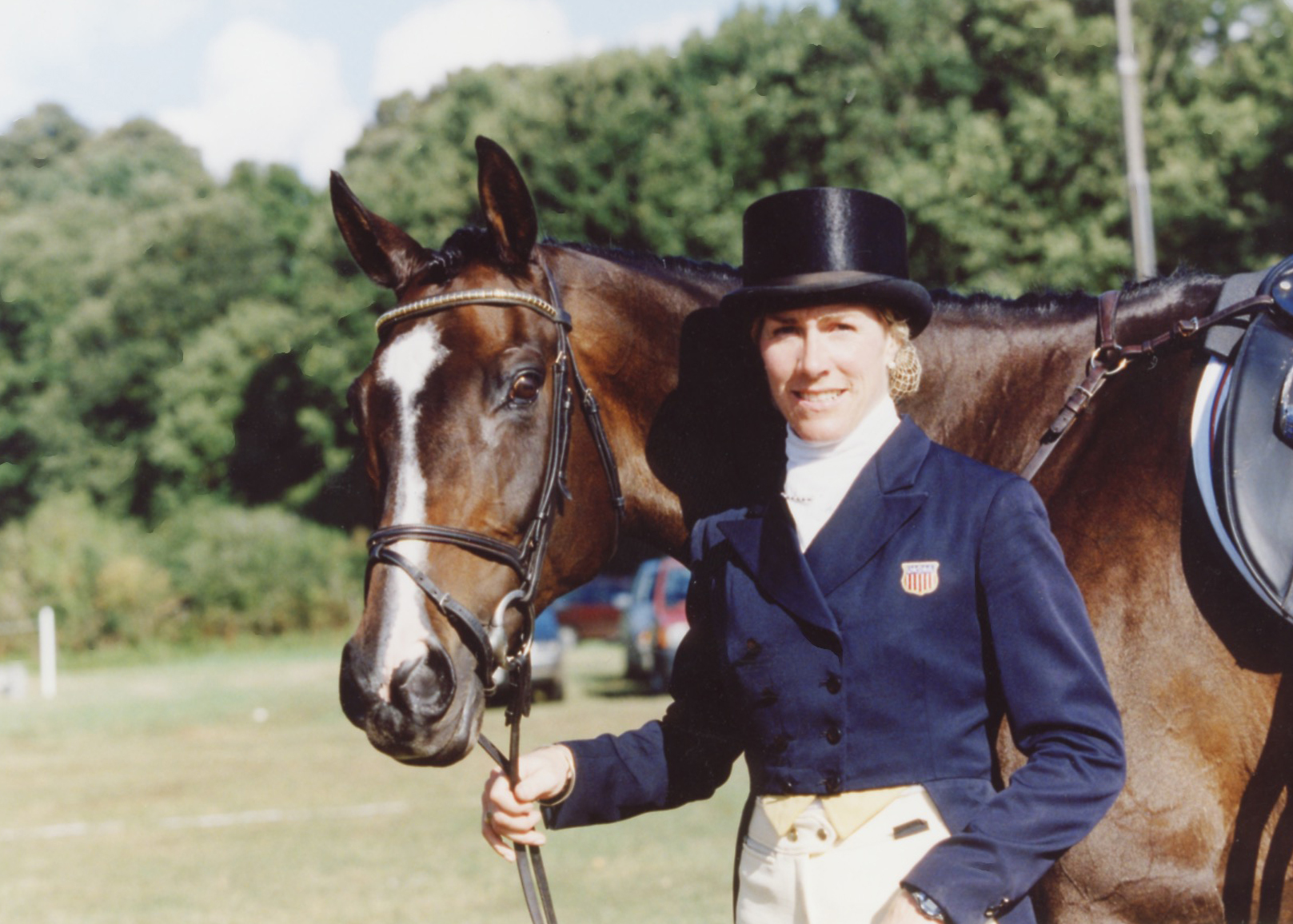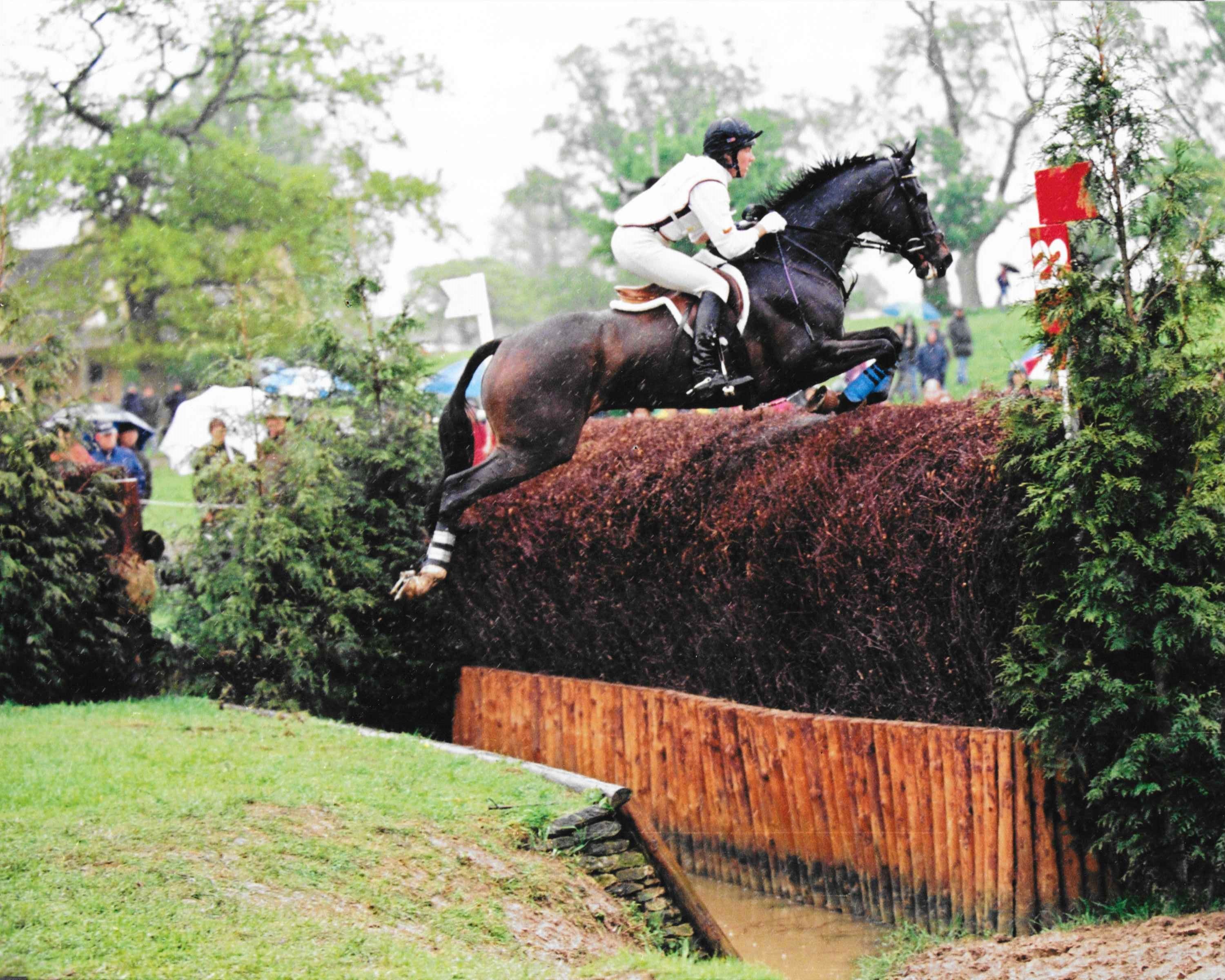Memories from the Vet Box with Kerry Millikin

“I wouldn’t trade it for anything, it was an amazing experience.” Twenty-five years ago, Kerry Millikin and her off-the-track Thoroughbred gelding, Out and About (who was only 8 years old at the time) won the individual Olympic bronze medal at the 1996 Atlanta Olympic Games, making her one of five females to have earned an individual Olympic medal for the U.S.
“It wasn’t easy,” said Millikin referring to the individual competition at the Atlanta Olympics. The 1996 Atlanta Olympics were the first Olympics with a new format of separate team and individual competitions for eventing. The individual competition had a different cross-country track and show jumping course than the team competition. Millikin explained, “They put people in the individual competition based on who they thought could win. The team competition, they weren’t giving any individual medals, so it was plenty good competition in the individual event.”
The U.S. sent seven horse and rider pairs to Atlanta to compete in the eventing portion (four for the team competition and three for the individual competition). The U.S. Eventing team earned the team silver medal and was made up of Bruce Davidson on Heyday, Jill Henneberg on Nirvana, David O'Connor on Giltedge, and Karen O'Connor on Biko. Competing in a separate field of competitors, the U.S. individuals were Mara DePuy on Hopper, David O'Connor on Custom Made, and Kerry Millikin on Out and About.
“We had great training leading up to the event. The horses were fit, and everybody was climatized to the horrendous heat down there. The team did a great job, and we had a wonderful support group. We had Brendan Furlong as the vet, Stephen Teichman as the farrier, and Captain Mark Phillips as the coach. To have all that support was incredible, and everybody worked really well together,” said Millikin.

The dressage and show jumping phases were held in the Georgia International Horse Park Grand Prix Arena. Millikin shared, “It was a huge stadium, but he did an amazingly good dressage test. The [flying] changes weren’t easy for him. The test wasn’t perfect, but it was solid enough because cross-country mattered so much.”
The Olympic cross-country track designed by Roger Haller proved to be tough with no one making it under the optimum time. But, Millikin had the third-fastest round of the day and added 19.6-time penalties. “The cross-country course was not suited to Outie because it wasn’t open and galloping. There were a lot of twists and turns, and back and forth. It was difficult to make the time. But, he was incredible.”
“Coming out of the start box, he was being a little silly, and [fence #2] was a huge square table on the side of the hill. A few fences after the table, there was a tight combination, and I knew I had to be able to communicate with him there and not have him run through me.”
“I remember coming around the corner [to the square table] and I knew the distance wasn’t quite right, but I wasn’t going to get in his face to shorten his stride. So, I just sat back and said rock on boy. He tapped the ground and got deep but he paid attention after that. I had taught him how to figure it out and that he’s participating here as well - it’s not just me putting him in the perfect spot. Then, we got through the tight combination just fine and he was very rideable.”
“The crowds were the most amazing thing at Atlanta, the people were unbelievable. [I] came down to the water, where a lot of people were having trouble, and he jumped through the water perfectly. Coming out, I could hear the roar of the crowd. Outie knew what the crowd was there for, and he flew after that. When we finished, everybody in the box was so excited.”
“The British crowds are incredible how deep they are, but Americans go wild for their people” On the final day, a packed house of American fans erupted from the stands of the Georgia International Horse Park as Millikin jumped a strong show jumping round to earn the individual bronze medal. The final rankings from the individual competition were Blyth Tait of New Zealand riding Ready Teddy with individual gold, Sally Clark of New Zealand riding Squirrel Hill with individual silver, and Millikin riding Outie with individual bronze to be the highest placed U.S. individual.

Bred by Susie Tuckerman in Massachusetts, Out and About (Lamour Rullah x Incarnadine) was retired from racing when Millikin first noticed him as a 3-year-old in a field. “There was a certain presence about him. He was super alert. His canter had a great balance. He went right over anything that was in front of him. He wasn’t worried about anything. He was athletic, he was light, and gave you a great feel,” said Millikin.
Acquiring the 16.2 hand off-the-track Thoroughbred gelding as a 3-year-old, Millikin and Outie built an unbreakable partnership and knew each other inside and out. “He had a wonderful side to him, but he was corky. He was a challenge because I knew he had so much ability, but I didn’t know if he could keep it together for the dressage. He was a very sensitive horse and was very claustrophobic. He couldn’t handle being boxed in. It was the same thing when you rode him - you couldn’t put too much pressure on him, or he would just explode. He was difficult to ride but, I loved him and he loved me.”
The love they shared for each other reflected in their results as the pair also finished in the top five at Blenheim, Burghley, and Kentucky in the 1990s. “The big three days were so much about the partnership and the relationship you had with your horse. I was not the type of rider that could catch ride a horse. I knew everything about Outie, that is what made it so meaningful. You had to read each other’s minds.”
“With the long format, the endurance day involved 13 minutes of cross-country, four and a half minutes of steeplechase, and 50 minutes of [roads and tracks]. It was an exceptional athlete that could do that. There were not a ton of horses that had that capability, but he was incredible. The long format totally suited him. The horse trials were just stepping stones to get to the big three-day events.
Three years after winning the bronze medal, Outie and Millikin finished third in 1999 at Badminton, one of the toughest events in the world. Millikin has memories of torrential rain, the steeplechase track being hock deep in mud, and an unforgettable feeling of her hearty Thoroughbred flying over the big brush and rails on cross-country.
“I remember seeing the distance 15 strides out. That was a huge gallop fence and I’ll never forget that sensation. It was pouring with rain, it was three-quarters of the way through the course, but, he skied over it. It was unbelievable. I wasn’t asking him to leave out a stride, it was just powering up to a distance. It was an amazing ride.”
The ride was captured in the photo below, the same photo used for Outie when he was inducted into the USEA Eventing Hall of Fame in 2018.

Millikin was a competitor of the long format for many years and brought up multiple horses to the highest levels of eventing. During the time she was competing Outie, she also competed Land Lady. While these two horses were different types of rides - Land Lady was a Warmblood mare with endless scope and Out and About was a Thoroughbred gelding full of run - steeplechase was helpful to both.
“It helped a hotter horse like Out and About because it settled him. You could just let him gallop and find his stride. Then, by the time it got to cross-country, he was like ‘okay I’m ready to go to work.’ It just took the edge off.”
“For Land Lady, the long format got her going forward. She was a Warmblood, and she would jump very high up in the air, and the steeplechase was perfect for her because it got her jumping forward and not just stuck up in the air.”
It was the vet box (aka 10-minute box) that first drew Millikin into the sport of three-day eventing. “I was a kid in Massachusetts, and we went to Ledyard Horse Trials in 1975. I was enamored by the whole event. I went down to the vet box and stood on the fence line. You had horses flying by, buckets filled with water, vets with stethoscopes, people washing horses off, throwing riders on horses, the countdown of the start box - the whole thing was exhilarating. That’s what really got me hooked.”
Kerry shares the love for the sport with her sister, Liz Millikin, and remembers Liz always being by her side in the 10-minute box. “My sister and I got really good at the 10-minute box. That’s what I also loved about the long format - it was such great teamwork. Everybody helped everybody else. I was by myself, I didn’t have a groom, but we all got together and helped each other in the box.”
“They were wonderful days,” reflected Millikin. Partnership, teamwork, and the relationship between horse and rider, the long format benefitted many horse and rider pairs like Millikin and Outie. Interested in experiencing something similar to Millikin? The USEA Classic Series offers the long format at the Beginner Novice through Preliminary level.
Click here for the 2021 USEA Classic Series calendar.
About the USEA Classic Series
The USEA Classic Series keeps the spirit of the classic long format three-day events alive for Beginner Novice through the Preliminary levels. Competitors can experience the rush of endurance day, including roads and tracks, steeplechase, the vet box, and cross-country, as well as participate in formal veterinary inspections and educational activities with experts on the ins and outs of competing in a long format three-day event. Riders who compete in a USEA Classic Series event during the year will have the chance to win a variety of prizes at the events from USEA sponsors. Click here to learn more about the USEA Classic Series.
The USEA would like to thank Bates Saddles, FITS, SmartPak Equine, Parker Equine Insurance, and Stackhouse & Ellis Saddles for sponsoring the USEA Classic Series.














